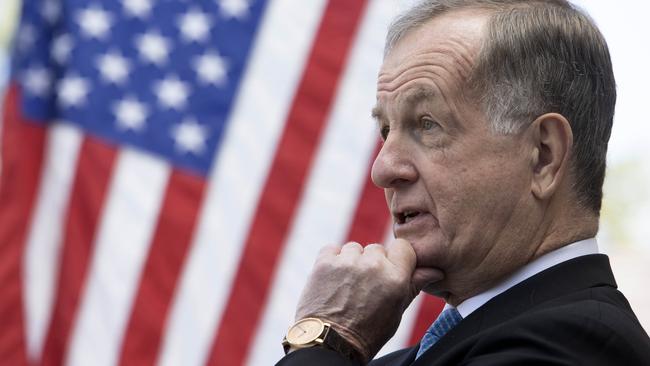United States Ambassador Arthur B. Culvahouse praises South Australian space technology
America’s man in Australia says SA is at the forefront of a race to secure a big role in NASA’s pioneering Mars ambitions.

SA News
Don't miss out on the headlines from SA News. Followed categories will be added to My News.
South Australia is at the forefront of America’s space missions to Mars and the moon, according to the US ambassador, who says the state has the prime environment to back the pioneering endeavour.
Ambassador Arthur B. Culvahouse told an Adelaide space forum the hi-tech Lot Fourteen precinct, in particular, had made substantial progress in building the Australian Space Agency’s mission control centre.
NASA wants to send people to the moon by 2024, using that as a springboard for sending astronauts to Mars.
“South Australia exemplifies the kind of collaboration between academia, government and industry that will be key to our return to the moon and the journey on to Mars,” Mr Culvahouse told an American Chamber of Commerce in Australia event.
He said SA was at the forefront of three priorities agreed in September last year between US President Donald Trump and Australian PM Scott Morrison – space, critical minerals and frontier technologies.
This collaboration would be unaffected by the presidential election result, he said, pointing out that the biggest bipartisan US Congress delegation since World War II had visited Australia last year.
Mr Culvahouse said there had been substantial progress since he met Premier Steven Marshall a year ago and discussed “the tremendous opportunities in space that lay ahead in South Australia”.
“Now, even in the midst of the pandemic, Southern Launch has sent two commercial space-capable rockets into polar sub-orbit,” Mr Culvahouse said.
“The Australian Space Agency, in the midst of a pandemic, is building its mission control centre here in South Australia.”
He praised the establishment at Lot Fourteen, the former Royal Adelaide Hospital site, of the SmartSat Co-operative Research Centre and the “remarkable work” there at the Australian Institute for Machine Learning.
“The institute’s researchers are building the autonomous systems and machine-learning algorithms that will help make the moon-to-Mars journey a reality and successful,” he said.
Mr Marshall said SA’s vision for the space sector was to see the state designing, manufacturing, launching and operating small satellites. A key part of achieving that goal would be to develop Southern Launch’s site at Whalers Way, south of Port Lincoln.
“This way, we’re doing our part to help our nation achieve its goal of creating 20,000 new space industry and related jobs by 2030, while making sure South Australia maximises its share in this critical growth sector,” Mr Marshall said
Deloitte Access Economics partner Aaron Hill said the wave of US investment that underpinned SA companies such as General Motors-Holden and spurred SA’s post-war industrialisation was now being pumped into hi-tech industries, including space, data science, defence and cyber at Lot Fourteen.

